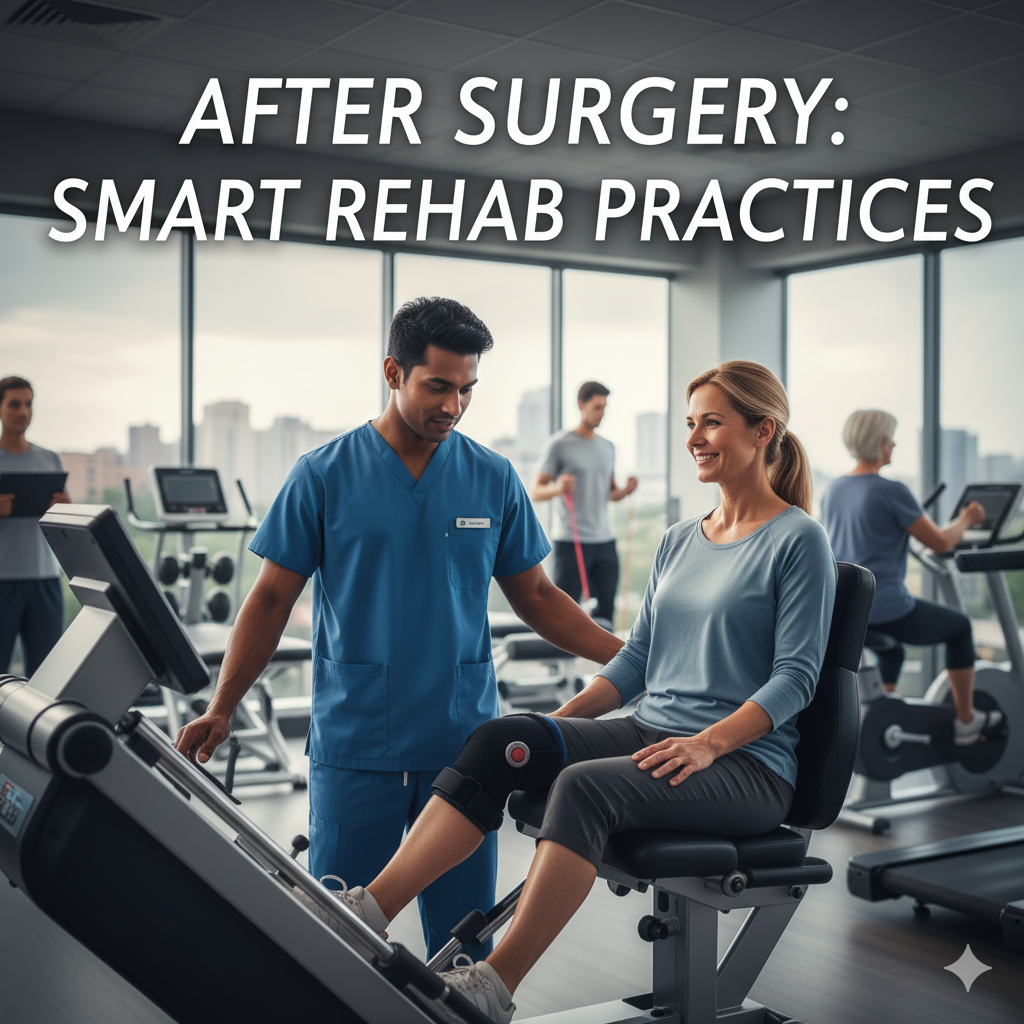Whether you’ve had a robotic knee replacement, shoulder repair, or hip surgery, your recovery doesn’t end in the operating room. In fact, the most crucial part starts after surgery — with focused rehabilitation.
At Dr. Dibya’s Clinic, we’ve seen firsthand how the right rehab practices can cut recovery time in half, reduce complications, and restore mobility faster. Here’s a guide to doing it smart — not just hard.
🕒 1. Respect the Recovery Timeline
Every surgery has a typical healing period. For example:
Knee replacements: 6–12 weeks
Shoulder surgeries: 3–6 months
Hip replacements: 6–8 weeks
🚨 Mistake to avoid: Rushing back to full activity too soon. Healing takes time and patience.
🧘♂️ 2. Begin Movement Early (But Safely)
Most patients are encouraged to start moving within 24–48 hours post-surgery.
Light walking, gentle range-of-motion exercises, and deep breathing help prevent clots and stiffness.
🦯 Use assistive devices like a walker, crutch, or sling as recommended—don’t ditch them too soon.
🏋️♂️ 3. Stick to Your Physiotherapy Plan
Rehab is not “one size fits all.” Your physiotherapist will tailor exercises based on:
Surgery type
Pain level
Muscle strength
Joint flexibility
💪 Key principle: Do your exercises daily. Rehab works only if you work it.
💊 4. Manage Pain Proactively
Take prescribed painkillers and anti-inflammatory meds as advised.
Use ice packs to control swelling.
Don’t let pain stop you from moving — the goal is to stay active within safe limits.
🗣️ Tell your doctor if pain worsens or feels unusual.
🍎 5. Eat for Recovery
A high-protein, high-fiber diet fuels healing. Add:
Eggs, lentils, paneer, fish, leafy greens
Vitamin C (for tissue repair) and calcium-rich foods
🥤 Stay hydrated. Avoid alcohol and smoking—they slow healing.
🛏️ 6. Rest, But Don’t Be Sedentary
Alternate between activity and rest. Too much of either can be harmful.
Short naps and elevating the operated limb help reduce swelling.
📺 Set reminders to move every hour, especially if watching TV or working from home.
🧠 7. Focus on Mental Recovery Too
Post-surgery anxiety or frustration is common. You’re not alone.
Set small, achievable goals: “Today I’ll walk to the gate,” “This week I’ll do stairs with support.”
Celebrate your progress—not just the destination.
🧘♀️ Breathing exercises, music therapy, or even short outdoor walks can lift your mood.
👨⚕️ 8. Attend Follow-Ups & Report Red Flags
Keep every appointment — it helps the surgeon monitor your healing.
Watch for signs like:
Excessive swelling or redness
Fever
Leaking from wound site
Sudden pain or immobility
📞 Call your surgeon immediately if anything feels “off.”
📌 Final Thoughts: Healing Is a Journey, Not a Race
Recovery is not just about the bone or joint—it’s about restoring your full lifestyle. With the right rehab strategy and professional guidance, most patients are back to walking, climbing stairs, and enjoying pain-free movement within weeks or months.
🩺 Need Help With Recovery?
At Dr. Dibya’s Clinic, we don’t just operate — we walk with you through every step of recovery. From personalized physiotherapy referrals to smart home recovery tips, we’re here for your full healing journey.

